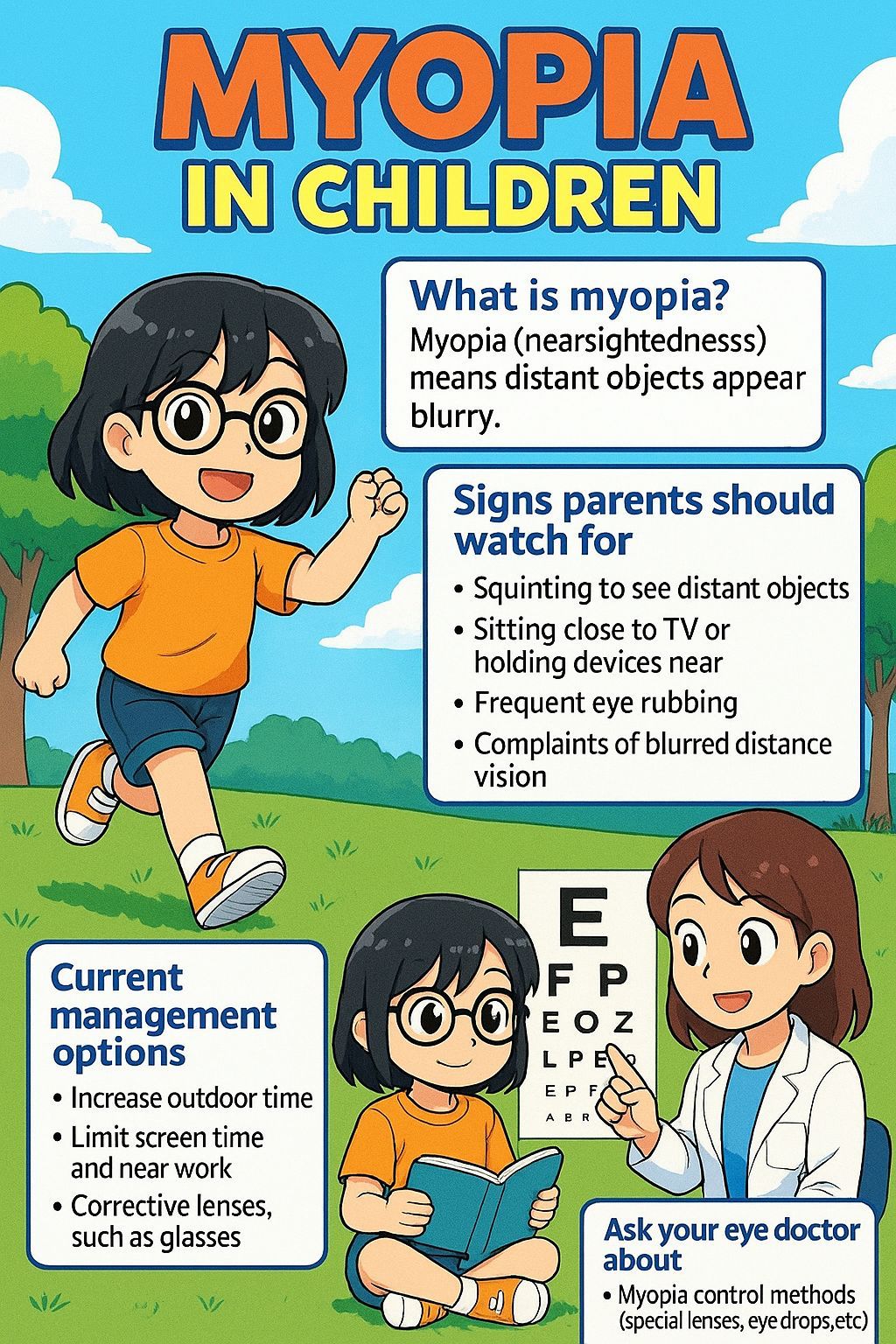 Dr. Siddhartha Ghosh
Dr. Siddhartha Ghosh
Consultant Ophthalmologist (MBBS, MS)

Myopia (nearsightedness) means distant objects appear blurry while near objects look clear. It happens when the eyeball grows too long. The condition usually starts in school-age children and can worsen as they grow.
Childhood myopia is increasing worldwide.
Progressive myopia raises the risk of serious eye diseases later (retinal detachment, glaucoma, myopic maculopathy).
The goal: slow eye growth and prevent high myopia.
Squinting or sitting too close to the TV.
Difficulty seeing the classroom board.
Frequent eye rubbing or blinking.
Complaints of blurry distance vision.
Cycloplegic refraction: accurate measurement using eye drops.
Axial length measurement: tracks eye growth over time.
Increase outdoor play: 1-2 hours daily reduces risk.
Limit screen & near work: Use the 20-20-20 rule (every 20 min, look 20 feet away for 20 sec).
Defocus spectacle lenses : special designs proven to slow progression by 30-60%.
Once-nightly drop in each eye.
Safe, effective, reduces progression by up to 50%.
Minimal side effects (mild light sensitivity, near blur).
Sometimes two treatments (e.g., Ortho-K + Atropine) are used together for fast progressors.
Check-ups every 3-6 months.
Track both power and axial length.
Adjust treatment as needed.
Encourage outdoor play daily.
Limit screen and near-device use.
Ensure consistent use of spectacles/drops.
Schedule eye exams yearly or sooner if changes occur.
Early action = better control = healthier eyes for life!
Consult your eye specialist to discuss the best myopia-control option for your child.
(This information is for patient awareness and not a substitute for professional medical advice.)